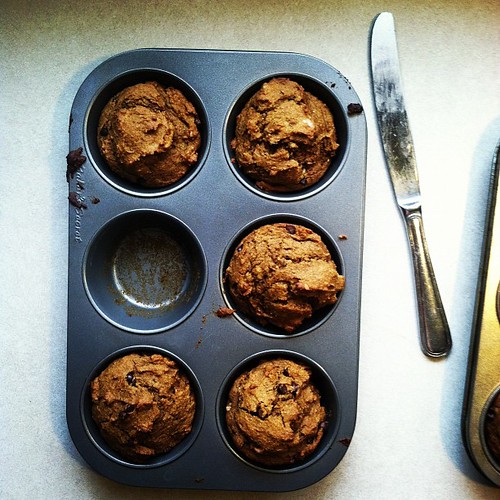
Baking is enough of a mystery to most cooks, and vegan baking seems downright scary when faced with the conundrum of replacing butter, eggs, cream and milk.
As a professional pastry chef used to cooking with mass quantities of dairy and eggs, I felt a bit lost when I first started eating vegan. After some pretty big flops and a lot of research I discovered a few tips and tricks of the trade.
The Rooted Vegan Guide to Baking takes the mystery out substitutions. The best part? You can do it with a few basic grocery store provisions.
A couple of quick notes:
When experimenting I always cut the recipe in half to make sure everything works together so I don't waste ingredients if the recipe flops.
If you don't feel like turning your kitchen into a lab experiment check out vegan cookbooks. Babycakes Bakery in NYC, Chloe Coscarelli's newest book Vegan Desserts, and Vegan Pie in the Sky by Issa Chandra are some of my favorites.
I always keep this handy print out from PETA on my refrigerator door for a quick reference.
THE ROOTED VEGAN GUIDE TO BAKING
EGGS
Products like Energ Egg Replacer and Ground Flax Seeds are awesome, but you can also use basic baking soda or baking powder. The important thing is to know the role of the egg (binding or leavening) and pick the right replacement.
Leavening = light and fluffy = muffins, quick breads, cakes
1 egg =
2 tsp baking soda + 2 Tbs warm water
2 tsp baking powder + 1 Tbs vinegar (white or apple cider)
1 Tbs ground flaxseed + 3 Tbs warm water (mix until light and frothy)
Binding = dense and thick = cookies, crackers
1 egg =
EnerG Egg Replacer -- 1 1/2 tsp Egg Replacer + 2Tbs warm water
2 Tbs cornstarch + 2Tbs water
2 Tbs potato starch + 2 Tbs water
Custards and Quiches = creme brulee, pots de creme
1 egg = 1/4 cup pureed soft tofu
For firmer like the chocolate torte - 1/4 pureed firm tofu
MILK
Milk adds a light texture and rich flavor to baked goods. Use the unsweetened version.
Soy or Coconut Milk = creamy texture
Almond or Rice Milk = light texture
Buttermilk is unique because the acidity when combined with baking powder or soda helps to leaven the baked good, giving it a fluffy texture. Add 2 Tablespoons of vinegar or lemon juice per cup of non-dairy milk.
Cream is thicker and denser than milk. You need to replace not just the liquid, but also the fat content. Don't substitute straight non-dairy milk. Instead use full-fat canned coconut milk or blend up one-part soaked cashews and one-part water until smooth.
BUTTER
Butter, which gives baked goods their rich, ethereal flavor, is the easiest ingredient to replace as there are a lot of excellent vegan margarines on the market. You can substitute one for one with:
Earth Balance Buttery Spread
Earth Balance Coconut Spread
COCONUT OIL: THE HOLY GRAIL
My all time favorite butter substitute is unrefined coconut oil. It mimics the thickness and creaminess of butter and imparts a slight coconut flavor to your cookies, cakes, muffins and quick breads. Coconut oil is also excellent for pie crusts because it flakes just like butter. It is a bit pricey, but if you aren't making an army of baked goods every week the flavor is worth the money.
When using coconut oil in baked goods (with the exception of pie crust) you want to soften it just a tad to eliminate the little bits of solid oil. I microwave the oil in 10 second increments until it is the consistency of softened vegan margarine.
HONEY
Honey helps baked goods brown and also adds a little extra moisture. Agave nectar and maple syrup are excellent substitutions, but you need to cook them down and simmer some of the water out to create a thicker syrup. If you don't have time add an extra couple of teaspoons of flour to help absorb some of the additional liquid.
{Kate}







No comments:
Post a Comment